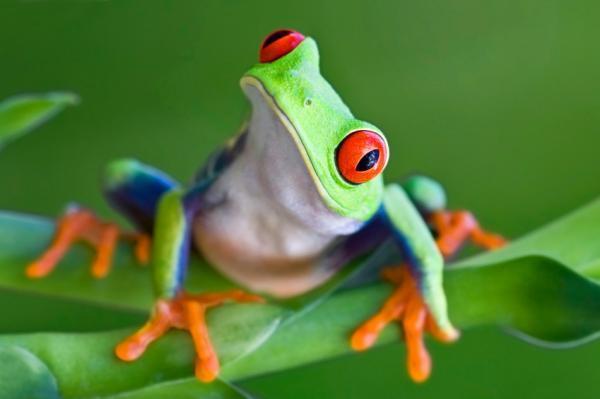Amphibian communities are shrinking on a global scale, mainly due to chytridiomycosis. Researchers know that some congenital amphibians are more susceptible to the disease than others.
Recent evidence, published in the April issue of BioScience, shows that amphibians can sometimes resist chytridiomycosis, a disease caused by Batrachochytrium dendrobatidis (Bd). Jonathan Q. Richmond and three other co-authors argue that scientists need to expand the study of chytridiomycosis, in addition to the so-called immune acquired in amphibians, as that could improve the models. predicting Bd's transmission, thus finding a way to protect endangered toads and frogs.
 Red-eyed tree frog. Amphibian communities are shrinking on a global scale, mainly due to chytridiomycosis. Researchers know that some congenital amphibians are more susceptible to the disease than others. (Photo: iStockphoto / Mark Kostich)
Red-eyed tree frog. Amphibian communities are shrinking on a global scale, mainly due to chytridiomycosis. Researchers know that some congenital amphibians are more susceptible to the disease than others. (Photo: iStockphoto / Mark Kostich)
Richmond and colleagues discussed experimental studies showing that two frogs in New Zealand were infected with Bd but were treated with chloramphenicol antimicrobial drugs and were subsequently resistant to the fungus. Other studies show that the North American toad survived after exposure to Bd under dry conditions is more likely to survive when reinfection occurs in moist conditions compared to toads exposed to Bd in moist conditions. right from the start.
Richmond and colleagues emphasize that congenital resistance needs to be activated in animals before immunity can develop. They point out some of the key components of the immune system - toll-like receptors (toll-like receptors) and complex molecular matching molecules - very likely to play a key role in connecting the system. Immune and acquired immune system. They also urged scientists to conduct collaborative studies on how immune systems interact when Bd spreads.
 Animal 'suffering' after hibernation
Animal 'suffering' after hibernation Why do goats climb well?
Why do goats climb well? Scientists were surprised to see chimpanzees eating turtles
Scientists were surprised to see chimpanzees eating turtles Giant catfish died deadly due to drought in Thailand
Giant catfish died deadly due to drought in Thailand